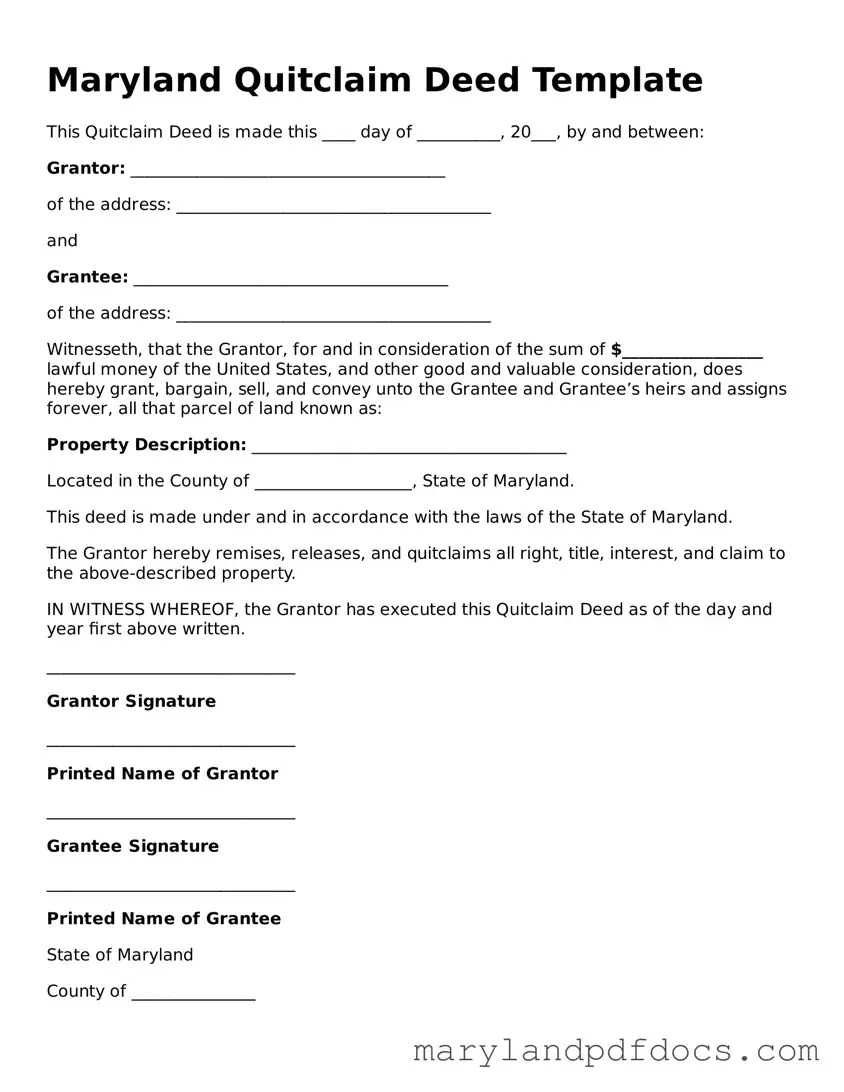Maryland Quitclaim Deed Template
This Quitclaim Deed is made this ____ day of __________, 20___, by and between:
Grantor: ______________________________________
of the address: ______________________________________
and
Grantee: ______________________________________
of the address: ______________________________________
Witnesseth, that the Grantor, for and in consideration of the sum of $_________________ lawful money of the United States, and other good and valuable consideration, does hereby grant, bargain, sell, and convey unto the Grantee and Grantee’s heirs and assigns forever, all that parcel of land known as:
Property Description: ______________________________________
Located in the County of ___________________, State of Maryland.
This deed is made under and in accordance with the laws of the State of Maryland.
The Grantor hereby remises, releases, and quitclaims all right, title, interest, and claim to the above-described property.
IN WITNESS WHEREOF, the Grantor has executed this Quitclaim Deed as of the day and year first above written.
______________________________
Grantor Signature
______________________________
Printed Name of Grantor
______________________________
Grantee Signature
______________________________
Printed Name of Grantee
State of Maryland
County of _______________
On this ____ day of __________, 20___, before me, a Notary Public, personally appeared the above-named Grantor(s) who acknowledged the signature(s) to be their own and that they executed this instrument for the purposes therein contained.
______________________________
Notary Public Signature
My Commission Expires: _______________
